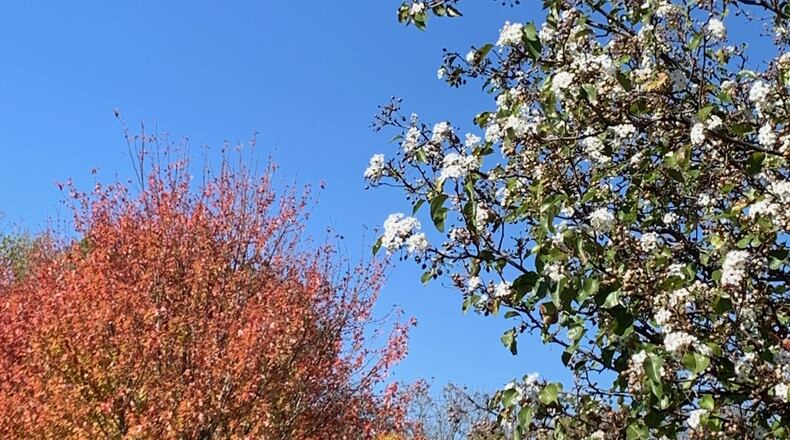During the summer I watered new plants about once every two weeks with a thorough soaking. I put the hose at the base of the tree or shrub and leave it on trickle for around an hour or so. I take a soil knife and insert it in the soil around the outer dripline to see if the upper six inches or so is moist.
When temperatures cooled down, plant growth slowed down (but not roots) and the need for water decreased. I watered in early October, and I am going to be doing it one more time.
It’s somewhat difficult to explain when to stop. Sometimes you just have a feel for when the soil is moist enough.
For instance, I know the soil is dry down to at least 12″ because I just planted a few hydrangeas. The soil had little to no moisture. Therefore, I am going on the assumption that the rest of my landscape is pretty much in the same condition.
That said, areas in shade or plants that have been mulched have more moisture in the soil that those out in the full direct sun. I am also familiar with areas of the landscape that might be a little wetter than others, though I don’t have many.
The best recommendation that I can give is to water them at least one more time with a thorough soaking. Thorough, not a blessing or a few minutes of soaking. One last good deep soaking should work because we are in a time frame where they are not using the water like they were during the summer. Therefore, a final soaking and then you can put your hoses away.
Wow, I never thought I would struggle with this explanation, but I did! At any rate, as I write this on Wednesday, we are expected to get a nice amount of rain on Thursday and Friday. If this comes through, put the hoses away this weekend!
On another note, I have also received several pictures and comments about plants blooming out of season. One gentleman just sent a photo of his lilac in bloom.
This is quite normal. Spring blooming plants are sort of “tricked” into a dormant cycle during a drought and then with a little bit of rain, they think it’s spring.
Flower buds form in August and if there is a stressful period, plants sometimes re-bloom. The bloom isn’t usually a complete full bloom, but more of a scattered flowering. My magnolia does this periodically in August.
This year, I have seen more species blooming again in September and October than I normally do. I have seen apples, crabapples, magnolias, viburnums, and now lilacs with a few blooms here and there.
This won’t hurt the plant, but there may be fewer flowers in the spring, depending on how many flowers were present this fall.
Pamela Corle-Bennett is the state master gardener volunteer coordinator and horticulture educator for Ohio State University Extension. Contact her by email at bennett.27@osu.edu.
Credit: Contributed
Credit: Contributed
Credit: Contributed
Credit: Contributed
About the Author

